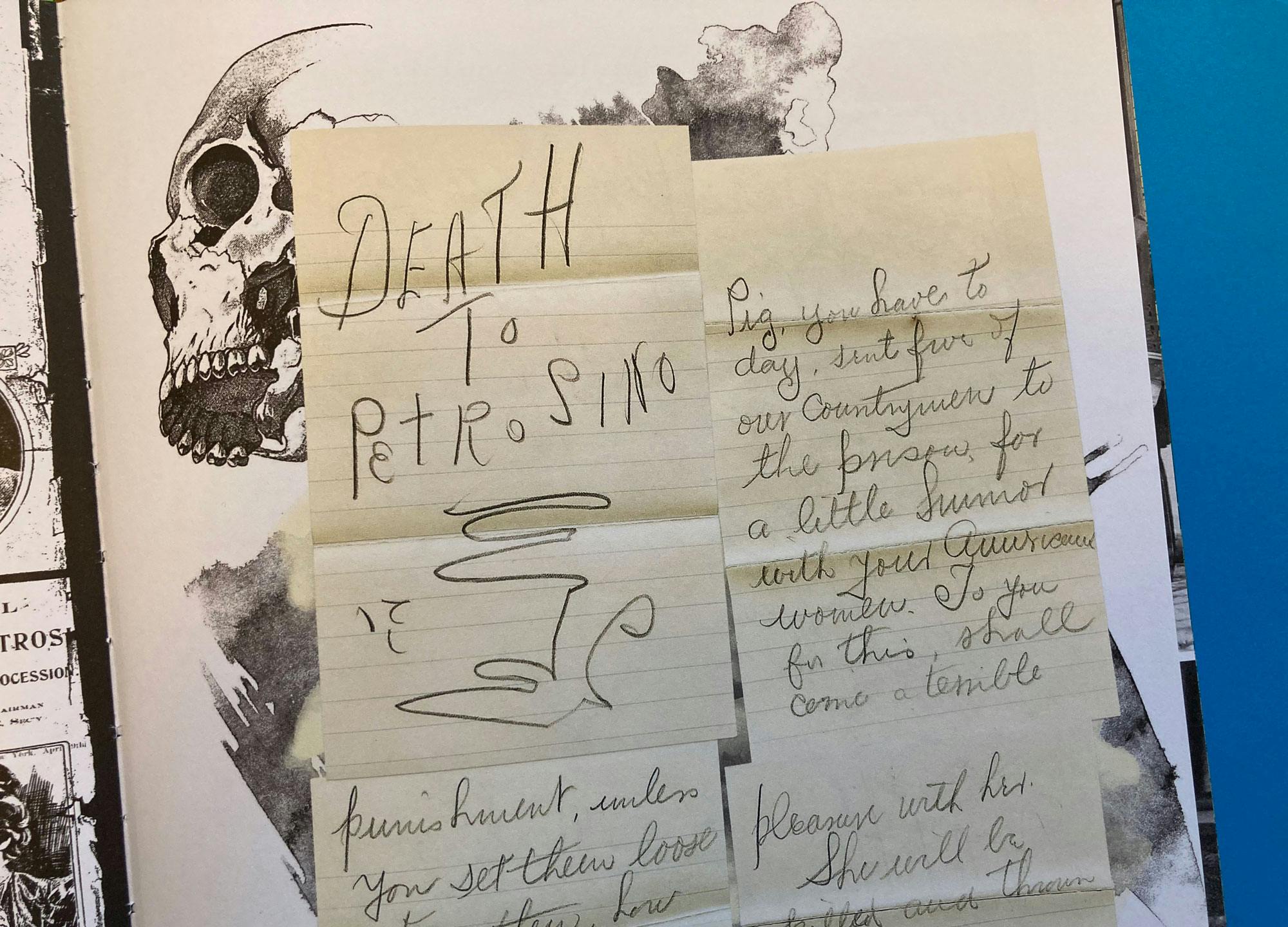The untold history of the mafia
So meticulously researched it reads like a life’s work, Secret Societies examines the origins of the Sicilian-American Mafia. The focus is the 1890s-1920s, a period before the 1931 foundation of the ‘five families’ that is largely undocumented. Jon Black, who wrote and designed Secret Societies, begins not with a grisly account of the crimes, but with a definition of “true Mafiusu” that is interestingly emotional. The first piece of writing you encounter as a reader is taken from the 1904 book Sunny Sicily: Its Rustics and its Ruins, by Ethel Brilliana Tweedie. Tweedie quotes an anonymous source, who describes the Mafia as being bound together not by violence so much as by the determination to be:
“… a man, in the manly sense, to retain the rights of self-preservation, to be just in all things, never to wail or cry, to be great and strong…”


Divided into seven sections, from ‘Arrival in America’, to the rise and fall of the first US Mafia boss Giuseppe Morello and his brother-in-law Ignazio Lupo, Black sheds light on the era by digging into previously uncollected source material: ransom notes; mug shots; newspaper clippings; and hand-written police records. This makes Secret Societies dense and sometimes difficult to navigate, but extraordinarily rich; the reading experience is a bit like diving for pearls. If your knowledge of the mafia has mainly been gleaned, as mine has, from mob dramas, the sources collected here will feel unexpected. The epigraph to the first section, for example, tells a story about a mafia born out of loneliness:
“What few Italians understand before they come to the United States is that a mysterious process of unmaking and remaking will take place in them… All that moral support that men derive from religious and social ties with the group they have grown up with is imperiled when they find themselves in the maelstrom of a strange land… For many the destiny is one of loneliness, disappointment, demoralization, sometimes transitional in its stay, but often enduring.” (The Italian Emigration of our Times, 1919)

The quality of the printing of Secret Societies is exceptional: hundred-year-old photographs are so vivid, they appear almost 3-D. One of my favourite spreads shows a group of about 25 people, with children, blinking cheekily into the camera on Lafayette Street in 1915. Scrawled on the top left of the photograph is a caption: “Wher bomb exploded 11/6/15”. Other spreads just contain long lists of the dead. Most fascinating of all are pages of hand-written ‘Black Hand Letters’, shoved through the crack under a door or dropped in a tenement letterbox, containing a demand for money under threat of death.









